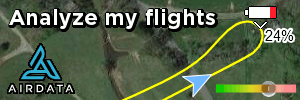Well, then, this non-lawyer thinks that the quotation, whether in Latin or English, is imprecisely worded to achieve its intended meaning. For sure, its origins in English common law predate and couldn't have envisioned the Wright brothers' rude incursions into the sky. They even predate Benjamin Franklin's experiments with kites and thunderstorms.
The sky in which birds and bees and drones and Cessnas and 747s fly begins at ground level. Taken literally, the wording of the maxim states that ownership extends only to the sky and not into it. And that's the way the FAA sees it centuries later -- the sky begins at the Earth's surface with ground-hugging, uncontrolled Class G airspace and then goes upward from there.
Cessnas and 747s fly over private property with impunity, and nobody gives them a second thought. Why? Because they're usually high and therefore aren't perceived as being intrusive. Consumer drones are different. They're confined to the lowermost level of sky, down where people walk and breathe and build their houses and fences. People also erect invisible boundaries around themselves, and intrusions into such perceptions of personal space are unwelcome, even in public places. Drone operators should respect those personal boundaries, recognizing, of course, that they vary greatly from one person to the next. As always, it's best to err on the side of caution.













